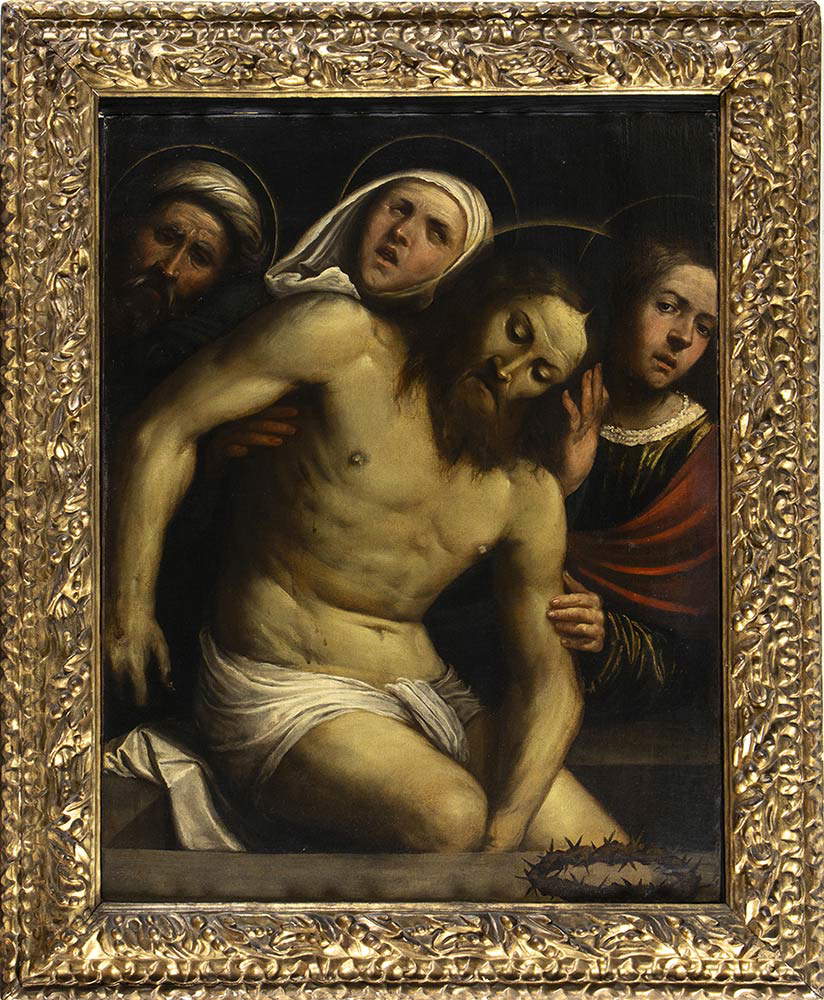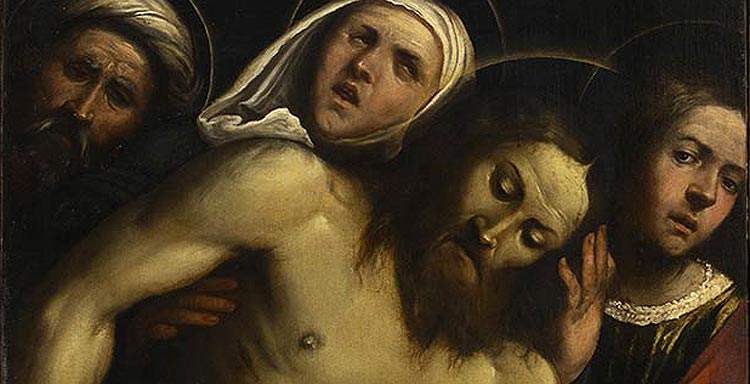Important new work by Romanino discovered. Going up for auction at Bertolami's
Romanino ’s (Girolamo Romani; Brescia, c. 1485 - c. 1566) catalog is enriched with a new work, for a “resounding addition,” as stated by the Bertolami auction house at which the painting will go on sale next April 27, with an estimate between 470 and 620 thousand euros and auction base 400 thousand.
The painting, a Deposition of Christ in the Tomb, has been recognized as a work by Romanino by two specialists who studied it independently-Alessandro Nova and Francesco Frangi-an“unpublished masterpiece,” the auction house states. “The impressive unpublished painting,” reads the auction catalog entry, “represents a resounding addition to the corpus of Girolamo Romanino, as Prof. Alessandro Nova and Prof. Francesco Frangi independently noted after live analysis of the canvas. Indeed, the work shows itself as a pinnacle in the painter’s entire production in terms of emotional intensity and tragic pathos.”

The composition, the sheet continues, “is tight and almost compressed, dominated by the figure of the dead Christ who occupies the entire foreground of the scene, with the three heads just behind him as a sorrowful crown. Mary’s two hands dramatically peep out from behind, the left supporting the Savior’s abandoned head, the right resting on his side, just above the cut of the still bleeding wound. Particularly dramatic is the expression on the Virgin’s face, with her brow furrowed, eyes averted and mouth half-open, suggesting, rather than a scream, a kind of hiss or gasp that encapsulates all the heartbreak, compassion and intimate, physical sharing of the fate of her son, who died as a man. The figures of John the Evangelist and Joseph of Arimathea close the scene at the sides, counterpointing Mary’s explicit suffering with mournful expressions of mute resignation. At the lower margin of the image, the stone tomb and the crown of thorns constitute, beyond their narrative coherence, visual stimuli that push the viewer toward a further stage of personal affective participation.”
Nova and Frangi convincingly attributed the work to Romanino on the basis of stylistic evidence: the composition, the expressive solutions, the pictorial subject matter, the coloristic wizardry, speak of an artist of the first magnitude, typical of an artist who looks above all to Titian and Giorgione, and to Lombard art, primarily Savoldo, without neglecting Lorenzo Lotto, and who nonetheless presents powerfully distinctive stylistic features, capable of bringing together the articulated texture of his references within a painting of rough realism, devoid of courtly accents but not popular: a painting that finds its most suitable ground precisely in the tragic register we admire in the present painting, direct, energetic, essential and emotionally capturing.
“Even the composition, the manner of drapery, the chromatic palette, the postures, primarily of arms and hands, and the physiognomies of the characters find stringent terms of comparison within Romanino’s corpus,” the sheet continues: "the most obvious, also for reasons of iconographic contiguity and expressive climate, can be recognized in the Dead Christ between the Virgin and St. John the Evangelist, formerly in a Florentine private collection and now of unknown location, which presents clear similarities in the bust and loincloth of Christ, in the physiognomy of the Virgin and in the juxtaposition of their heads. No less limpid are the similarities with the Lamentation formerly in the Kaiser-Friedrich Museum in Berlin, lost in 1945 during the bombings at the end of World War II, which concern primarily the face of Christ, but also the other three heads that are the protagonists of our painting."
The canvas, which is in an excellent state of preservation, comes from a private collection in Lombardy. Who will be its next owner? The painting comes with the Attestato di Libera Circolazione (Certificate of Free Circulation): this means it can also leave Italy.
 |
| Important new work by Romanino discovered. Going up for auction at Bertolami's |
Warning: the translation into English of the original Italian article was created using automatic tools. We undertake to review all articles, but we do not guarantee the total absence of inaccuracies in the translation due to the program. You can find the original by clicking on the ITA button. If you find any mistake,please contact us.




























